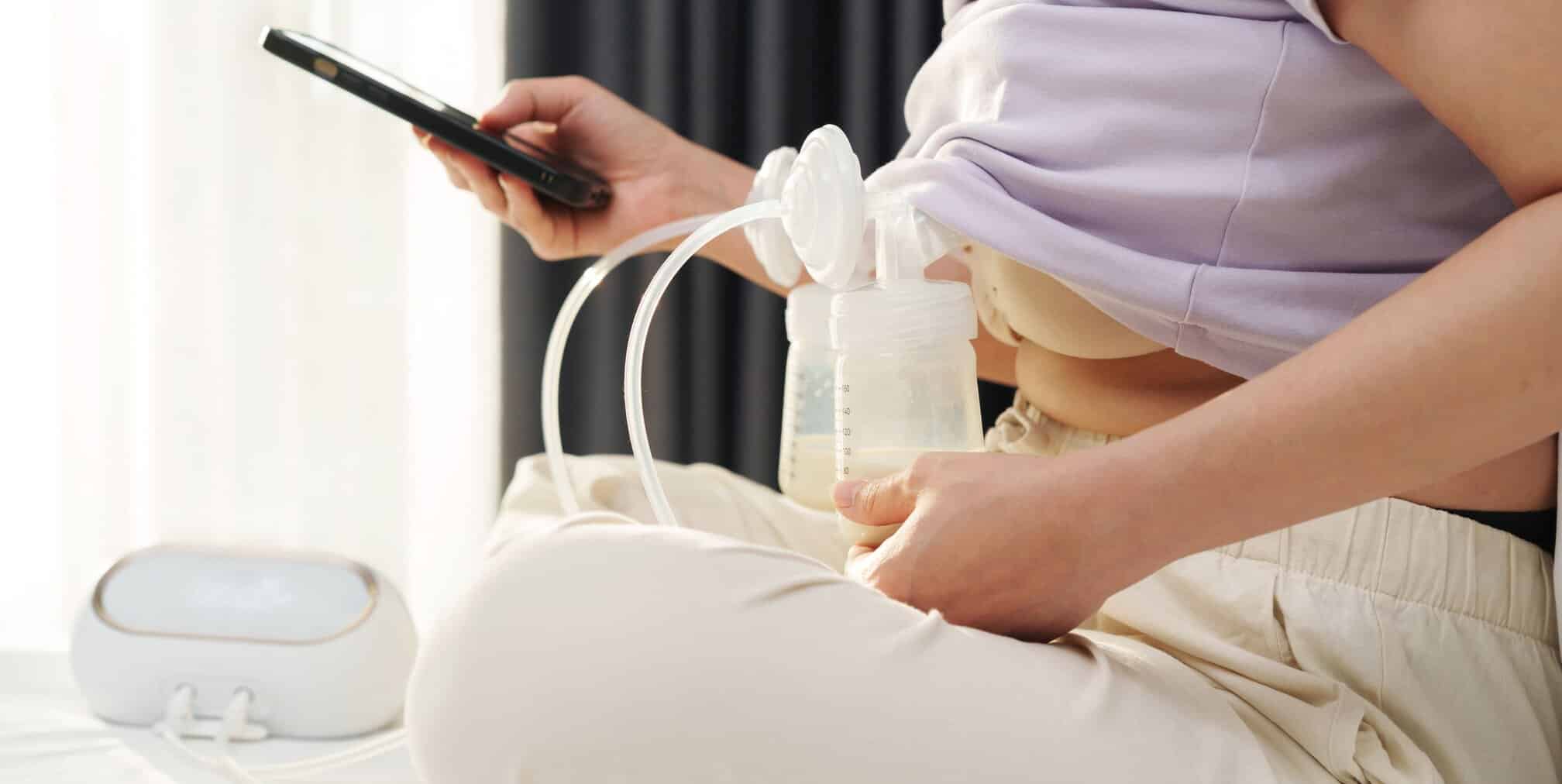Many mothers at some point in their breastfeeding journey, have the feeling that they don’t have enough milk for their baby’s needs. It’s important to understand that in most cases this happens because of a misunderstanding of the normal patterns of a nursing baby.
Babies need to nurse often, sometimes much more often than new moms living in a bottle-feeding society expect.
A pattern of ״snacking״ on the breast and waking up often at night is completely
normal. Unfortunately, some health professionals who aren’t educated about breastfeeding sometimes stress mothers out, making them think the normal nursing pattern of their baby is
something to be concerned about. Having confidence in your body’s ability to male milk is the first step towards successful breastfeeding.
One of the most common examples of normal breastfeeding patterns mistaken as a sign of not having enough milk is cluster feeding. Cluster feeding is when the baby camps out on the breast mainly in the afternoon and evening.
Cluster feeding happens because of an increased need for
suckling in the afternoon and evening and because of an increase in the fat content of the milk towards the evening that causes it to flow more slowly. It’s totally normal and temporary.
Sometimes it is necessary to boost milk production. If you feel there might be a problem with your milk you can use these excellent methods we have collected for you.
Add extra breastfeeding and/or pumping
The most important way to increase milk is by removing milk from the breast and the stimulation breastfeeding or pumping gives the brain via the nipple.
When the breast receives stimulation
and milk is removed from it the body gets the message to produce more milk. Milk removal and nipple stimulation are two different things because there can be nipple stimulation during
pumping or feeding without any milk being expressed from the breast.
Don’t get discouraged if you find yourself dry pumping, the stimulation will still contribute to increasing the milk supply. If you add extra pumping or nursing sessions your body will feel the demand has increased and hopefully increase the supply.
Where should you squeeze in the extra sessions? Think about whether there might be a block of time during the day when more time passes without breastfeeding than at other times.
Nighttime is an especially effective time for adding a feed due to higher boosts in prolactin, the milk-making hormone, these feeds will give you.
Sometimes it’s unrealistic to add a feed (if for example, you would rather not wake your baby up again at night, a sentiment shared by most tired parents) that’s when pumping can be super helpful.
the most effective way to increase milk is to express when the breast is empty,
remember – empty breasts make more milk, and full breasts don’t make more milk. If you can
express right after breastfeeding, the effect will be greater even if no milk comes out.
Breastfeeding or expressing between 12 and 6 AM.
Between midnight and six in the morning, the levels of prolactin, the hormone responsible for milk production, rise the highest after breastfeeding.
This increase in prolactin at night helps
milk production at all hours of the day and the addition of ״peaks״ in prolactin levels at night will help increase milk.
This is one of the hardest bits of advice to follow but it’s good to know and might be something to think about if all else fails.
The use of plants to support breastfeeding.
For thousands of years, women around the world have been harnessing the power of plants to support breastfeeding.
This ancient knowledge of traditional herbal medicine has been passed down from mother to mother, from generation to generation, and by herbalists who specialize in birth and lactation. Examples include plants such as:
- Shatavari – a central herb in traditional Indian medicine, for the support of women in
the various circles of life and during the lactation period.
- Chaste Tree – one of the most widely used plants in Western herbal medicine. Chaste
Tree has earned a reputation all over the world as an herb to support gynecological
health. This plant has been in use since ancient times to support the nursing mother.
- Angelica Sinensis – a major medicinal plant in ancient Chinese herbal medicine. Known
as the ״female ginseng״, Chinese medicine attributes to angelica properties that “propel” fluids in the body, and for this reason it is customary to include it in herbal formulas to support the flow of breast milk.
- Milk thistle –the nourishing seeds are used to support the body during the time of breastfeeding.
- Chamomile – besides the familiar and pleasant taste of chamomile flowers, they are considered, in Western traditional herbal medicine, to have added value thanks to the aromatic components they contain, which encourage the movement of body fluids. That is why Western herbalists customarily include chamomile flowers in formulas to support breastfeeding and the normal flow of milk. Chamomile is also famous for its calming qualities. Stress can harm your milk supply, so this calming effect is very welcome.
Skin-to-skin contact
Skin-to-skin contact is very effective in increasing the hormones necessary for the production and release of milk, so whenever you have an opportunity, try to spend time in physical
contact with your baby. Dress baby in a diaper only and make sure as much skin as possible is in contact with your skin. If you are not near the baby, you can produce a similar effect while expressing, by sniffing the baby’s muslin or by looking at pictures of the baby.
Technical troubleshooting
It is important to understand what is causing problems with the milk supply and to solve the root of the problem. Common issues are the breast just isn’t being emptied enough, inefficient emptying due to the baby’s mouth or jaw issues, a problem in the baby’s latch to the breast, and a hormonal problem. Meeting with a lactation consultant can help you find out what the problem is and how to treat it.
Power pumping
This is an intensive method of pumping, that is performed once a week at most, while some use it on a one-time basis. One option is to place the pump in a central place in the home, and for 24 hours to pump once an hour, for the best results, you should do it also at night and wake up at least every two hours for that purpose. This is how you create a kind of artificial growth spurt with the help of pumping to increase your production.
Another method of power pumping is to pump with a double-sided pump like this: 20-minute pumping, 10-minute rest, 10-minute pumping, 10-minute rest, 10-minute pumping.
With a one-sided pump, do it this way: 10 minutes of pumping on each side. Rest for 10 minutes for both sides, pump 10 minutes on each side, ten minutes rest for both sides and pump 10 minutes on each side.


